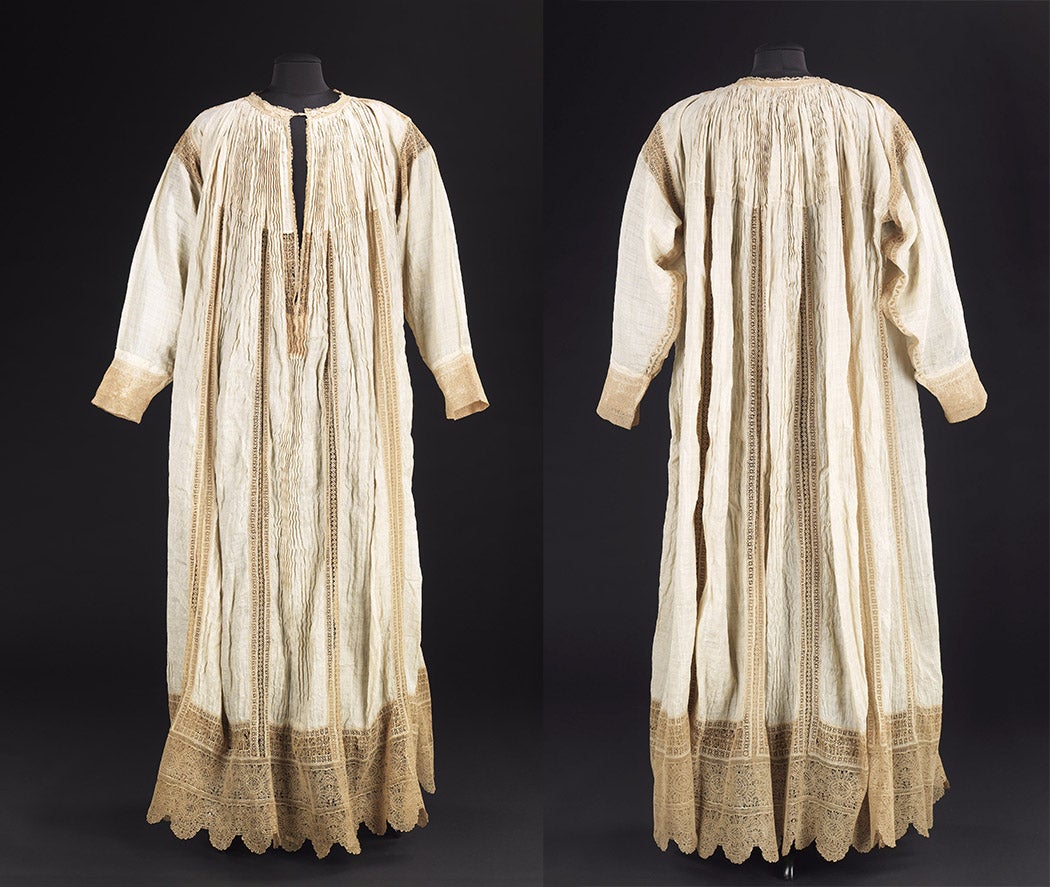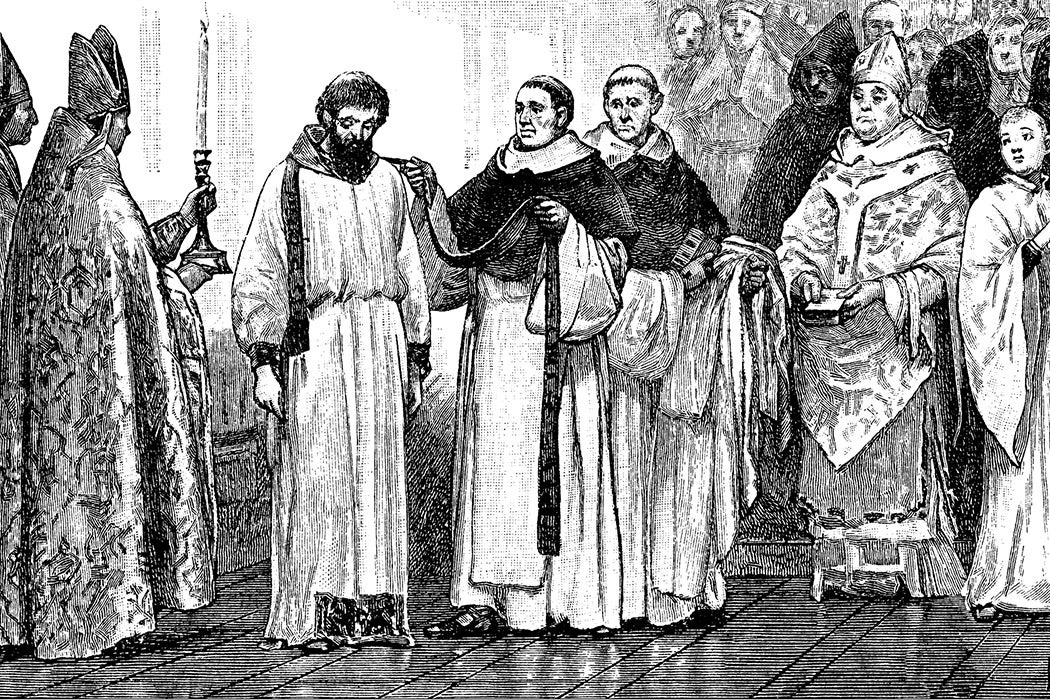How do you turn a priest back into a layperson? The process, known as a “rite of degradation,” was formally recorded for the first time in the fourteenth century. You might be more familiar with the term “defrocking,” which, as it turns out, was very literal—the unmaking of a priest entailed stripping him down, methodically removing each layer of garments that marked him as a holy person.
There’s good reason for this. A priest’s clothes were a carefully crafted message of holiness. As medieval historian Dyan Elliott writes:
The priest was the walking symbol of his chaste vocation: the white alb represented purity of the soul; his belt, chastity. The bishop wore three tunics: the white linen tunic signified purity; the silk tunic—the work of worms, which were believed to be generated spontaneously without coitus—represented chastity and humility; the third was the color of hyacinth, indicating airy serenity.
The making of a priest involved a ceremonial dressing, adorning him in robes appropriate to his order and anointing his hands with the sacred chrism. The significance of this process extended beyond the moment of ordination: Elliott argues that each time a priest dressed himself, he was reenacting this ritual—as indicated by some prayer books of the Middle Ages, which offered specific words for priests to say as they pulled on their shoes and clothes.
Defrocking inverted these vocal utterances, too. A curse accompanied the removal of each layer of clothing:
We take away your sacerdotal vestment and deprive you of sacerdotal honor…we take away your sacerdotal orarium or stole, representing the sweet yoke of God which you despised to carry and the stole of innocence you scorned to observe…
The priest’s fingers were scraped with a piece of glass to remove the sacred oil that once anointed them, and his hair was clipped to obliterate the appearance of his tonsure.

As an adage of the twelfth century had it, clergy were as distant from laypeople as human beings from animals. There was a great way to fall; hence the need for a powerful ritual. In designing it, the Church may have been inspired by similar rites for the degradation of knights and military officers. Literature and theater scholar Margaret Loftus Ranald draws on William Segar’s 1590 The Book of Honor and Armes to describe the ritual used to degrade a downfallen knight in the year 1020. Deemed a traitor, the knight was dressed in full armor by his brotherhood and brought to a church where priests were saying prayers usually reserved for burials. At the end of every Psalm, the brotherhood removed a piece armor from the disgraced, proclaiming curses as they went: “This is the Helmet of a disloyall and miscreant Knight.” Once stripped, the knight was rebaptized under the name “Traitor,” after which he was thrown down the stairs he had walked up when receiving his knighthood.
The rite of degradation was in use well before it was first formally set down in writing. Its outlines can be seen in the infamous Cadaver Synod of 897, when Pope Stephen VI put the corpse of his predecessor on trial and concluded the macabre affair by stripping the cadaver of its ecclesiastical robes and cutting off two of its anointed fingers. But the rite’s official establishment in the fourteenth century seems to have been a response to the church’s growing concern with heresy. Importantly, defrocking took a priest out of the jurisdiction of the ecclesiastical court. As philologist and historian Leena Löfstedt points out, this rendered the accused back into the authority of the state, which was liable to hand down much harsher punishments. A priest might be defrocked and then turned over to the secular court for execution; the ritual’s symbolic transformation had very real—even lethal—consequences.
Weekly Newsletter
At the same time, this form of public humiliation could produce unintended consequences. To sympathetic eyes, the sufferings of a defrocked priest could easily come to resemble the passion of Christ—particularly when followed by an execution. We can see this in the contemporary accounts of the 1415 defrocking and execution of the Prague theologian and reformer Jan Hus. Hus’s followers almost immediately came to view it as a martyrdom, as demonstrated in Thomas A. Fudge’s translation of a fifteenth-century passion text describing the events:
But at the last there was disagreement among his sentencers: some of them wanted to shave his head, while others objected…they placed on his head a paper crown with the inscription “this man is an obdurate heretic,” and with three revolting demons drawn on it. And he said, with the air of a beast being led to the sacrifice, not in a loud tone but with the patience of his Lord, “The crown which my redeemer bore on his sacred head was heavy and oppressive. This one, which is light and easy, I ardently long to kiss for your name’s sake, my Lord Jesus Christ.”
Condemned, crowned with demons, Hus was burned at the stake. After the blaze died down, the remaining parts of his body were burned a second time until reduced to ash, and the ashes carefully scooped up and tossed into the Rhine—all to prevent his remains from being treated as holy relics by his supporters.
In the chaos of Hus’s degradation, some of his clothes were stolen by the crowd. Even though these onlookers were far from sympathetic to him, the officials overseeing the execution, concerned that the garments would become relics in due time, were obliged to buy the clothes from the appropriators at three times their actual value. Such is the power of dress.
Support JSTOR Daily! Join our new membership program on Patreon today.







